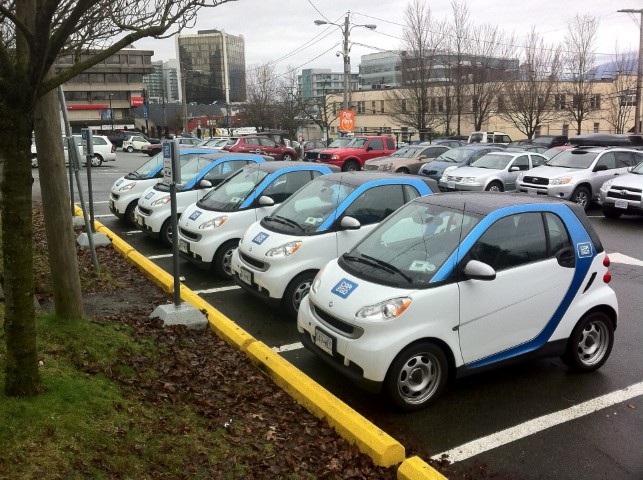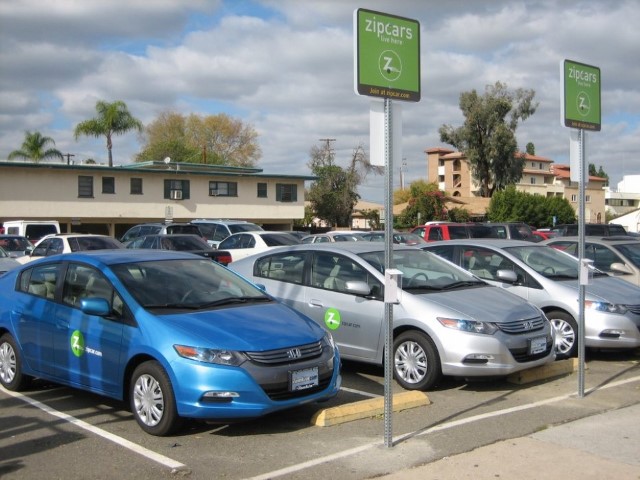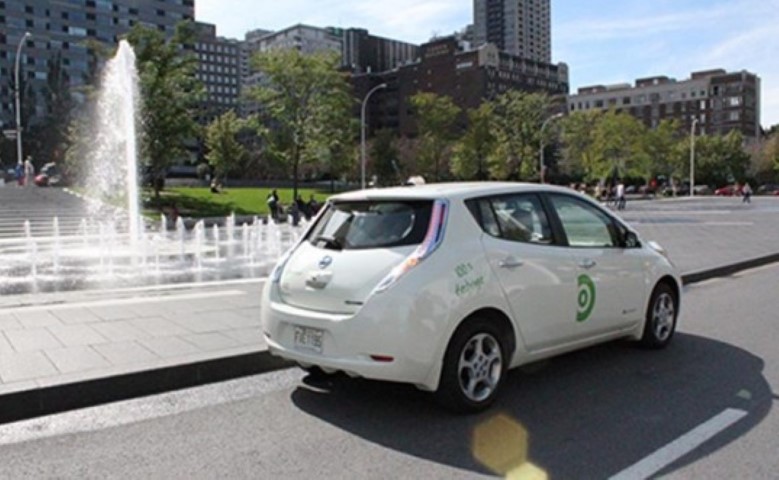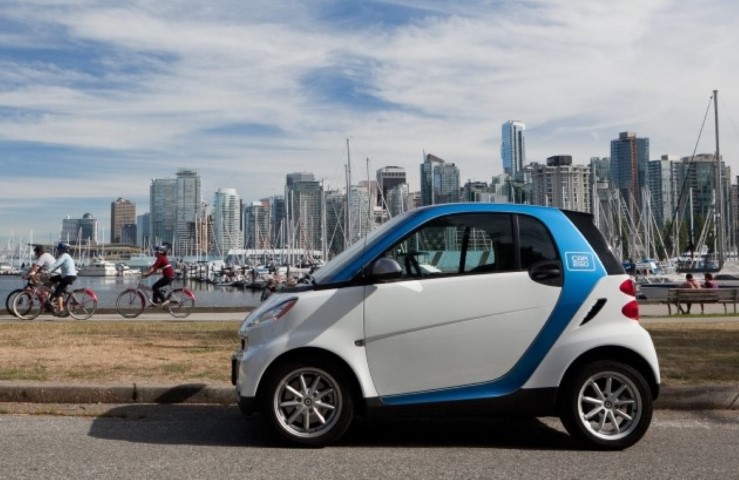Car share schemes surge across Canada
- Written by
- Published in News
- font size decrease font size increase font size
- Be the first to comment!

By now if you live in Toronto, Calgary or Vancouver you can't have helped but have noticed the tiny odd-looking white and blue two-person cars seemingly breeding like rabbits in downtown areas. The two-person Daimler AG Smart Fortwo cars are part of the car2go car share scheme – the latest of its kind to sweep Canada and seemingly unstoppable. Originally launched via pilot program in Germany in 2008, the program is now present in three Canadian cities as part of its remarkable growth across the globe. Daimler, which builds the smart cars and runs the program, expects it could have as many as 15 million customers in Europe alone by 2020 and it’s aiming to surpass revenue of €100 million by early 2015. Make no mistake; Canada is a large part of this aggressive growth plan with Vancouver being one of the company's best markets. And car2go is not alone, similar North American car share program Zipcar – which operates in Vancouver and Toronto – was recently sold to car hire giant Avis for half billion dollars, growing from a $75,000 investment 12 years ago.
A New Type of Car Hire
These new breeds of car share schemes differ from traditional car hire businesses in prices and availability. While traditionally people would need to attend an outlet, hire a car for at least a day and return the car to the same outlet – car share schemes allow users to hire cars on the go for as little as a minute and drop it off on the other side of town. Most car share programs use a subscription model where users pay joining or annual fees, and then pay per use. For example, car2go users often pay a registration fee and are then simply charged by the minute ($0.38 plus tax in Canada), hour or day for use. The company reports that the majority of trips in Canada are under half an hour. Meanwhile, Zipcar offers plans with a variety of joining and annual fees, and then charges by the hour ($8.25/hr for Vancouver or $9.25/hr for Toronto) or the day. Zipcar president Mark Norman recently said the wide variety of vehicles they offered combined with reserved parking spots and an advanced reservation system meant they were a flexible and reliable option for those looking for an alternative to car ownership. A similar pricing model is used by most car shares, with Communauto out of Quebec, charging through a combination of hours and kilometres.

Made Possible by Technology
While petrol prices, environmental concerns and a rocky economic climate all likely played their part in the car sharing boom – it’s technology that made it all possible. For example, car2go uses state-of-the-art technology including a swipe card, mobile phone app and GPS to facilitate 24-hour, curb-side hiring and one-way trips. Basically this means if you need a car and are within an allocated zone you can jump on your mobile phone, find the closest one, book it for up to half an hour, find it and swipe your card for access. Once that’s all done, you’re free to drive off.

When you're done simply park it on the side of the road in any free designated area. Zipcar and Modo offer similar services to Vancouver residents, essentially giving users the chance to rent vehicles on the spur of the moment. While car2go is limited to the miniature two-seater Daimler smart cars, Zipcar and Modo offer a range of vehicles including sedans, vans and pick-up trucks. In Montreal, a pilot for a purely electric car share program was launched in June by Communauto with 20 vehicles.
car2go's Canadian Boom
Canadians have flocked to car share schemes since they started popping up in the 1990s, with business at car2go especially booming. The company last year described growth in Vancouver as “exponential” and more recently dubbed Calgary the “fastest growing market across the world”. Its Vancouver launch in mid-2011 had 225 cars for 2,000 paying members. By early 2013 there were more than 23,000 members and 450 vehicles, making Vancouver one of the company's few break-even markets. In Calgary, a launch fleet of 150 vehicles ballooned to 400 in just over a year, with membership growing to 18,000 within months. A Toronto service was launched on June 30 with 250 cars, where car2go will compete against Zipcar and AutoShare. The CarSharing Association estimates that in North America alone more than one million people now belong to car sharing programs.
Is it Right for You?
Just because it's popular doesn't mean it works for everyone. Car share schemes may work well for the casual commuter living in the city, but if you live in the suburbs it could be cheaper to own a car. Most schemes operate within designated zones, take the car out of this zone and you're on the clock until you return. This can quickly add up.

Zones are generally centralised around cities, where the largest pockets of population reside. Live in the suburbs or commute out of town a lot and car share schemes quickly have dwindling appeal. It’s good to remember these days that while car ownership can be expensive there are tools to help you minimize costs. The Canadian Automobile Association's driving costs calculator can help you manage your vehicle's cost and your own expectations. Comparison sites are perfect tools to ensure you're getting the best possible deals on everything needed to keep your car on the road, from insurance to breakdown cover. Location, price and convenience are the big factors to consider when deciding whether a car share program is right or wrong for you. Also remember, giving up your own car in lieu of a car share membership will make impromptu road trips almost impossible or at least expensive.
A Future Fuelled on Young Drivers
Car share schemes are growing because they offer increasing convenience and savings to users. An increasing number of North Americans living in the right place are taking advantage of this and saving themselves money without sacrificing too much freedom. Zipcar launched in two new US cities (San Diego and Denver) this month and car2go shows no signs of slowing its aggressive expansion plans. Targeted predominantly at casual, inner-city, 20-something drivers, the cars have a ripe, rich and growing market – so expect to see more of those distinctive blue and white smart cars coming to a down town street near you.

